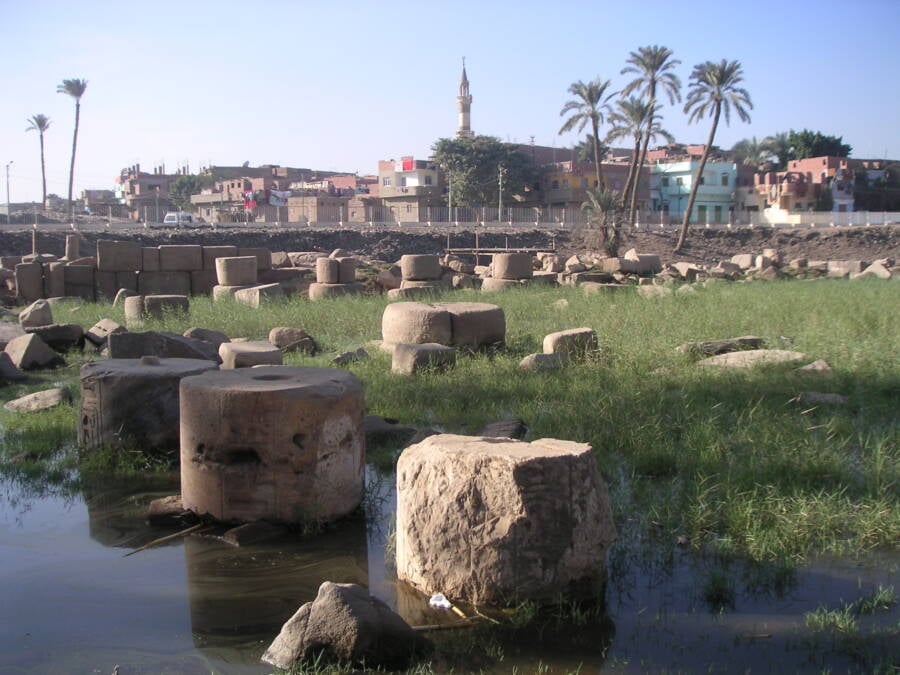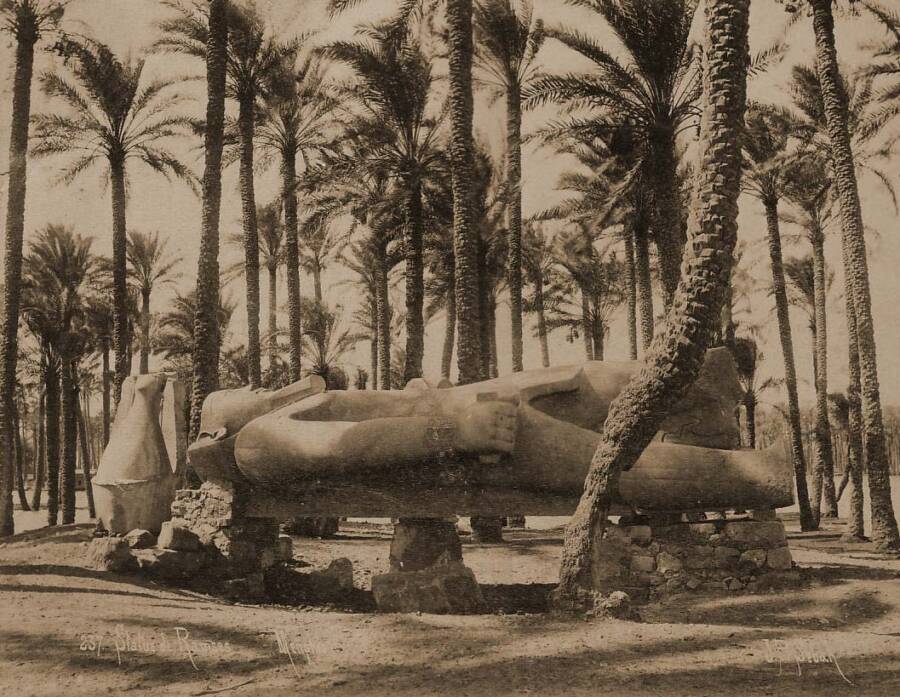Memphis: The Ancient Capital Of The Old Kingdom

Public DomainThe ruins of Memphis, Egypt.
Memphis was once the political and cultural center of ancient Egypt, making it one of the oldest cities in the world. According to later tradition, Memphis was founded around 2900 B.C.E. by the pharaoh Menes, who supposedly united the two prehistoric kingdoms of Upper and Lower Egypt.
The ancient city served as Egypt’s capital during the Early Dynastic Period (3150 B.C.E. to 2686 B.C.E.) and Old Kingdom (2686 B.C.E. to 2181 B.C.E.), and it continued to be one of the region’s most important cities throughout ancient Egyptian history.
The city was strategically positioned where the Nile Delta meets the river valley, symbolically unifying Upper and Lower Egypt. During its height, Memphis was a thriving metropolis that housed magnificent temples, royal palaces, and administrative buildings. The city was particularly associated with the worship of Ptah, a creator god and patron of craftsmen.
Over the millennia, Memphis gradually declined in importance as new capitals emerged. The city was eventually abandoned, and its stone monuments were systematically dismantled and repurposed for building projects in nearby Cairo and other settlements. The relentless flooding of the Nile, combined with centuries of neglect, buried much of the ancient capital beneath layers of silt and sediment, transforming the once-mighty city into scattered ruins.

Public DomainA massive statue of Ramesses II was uncovered in Memphis.
The lost city of Memphis is now an open-air museum and archaeological site located near the modern town of Mit Rahina, about 12 miles south of Cairo. The Mit Rahina Museum, built around a magnificent fallen colossal limestone statue of Ramesses II, houses artifacts like statues, pottery, and tools that shed light on daily life in ancient Egypt.





